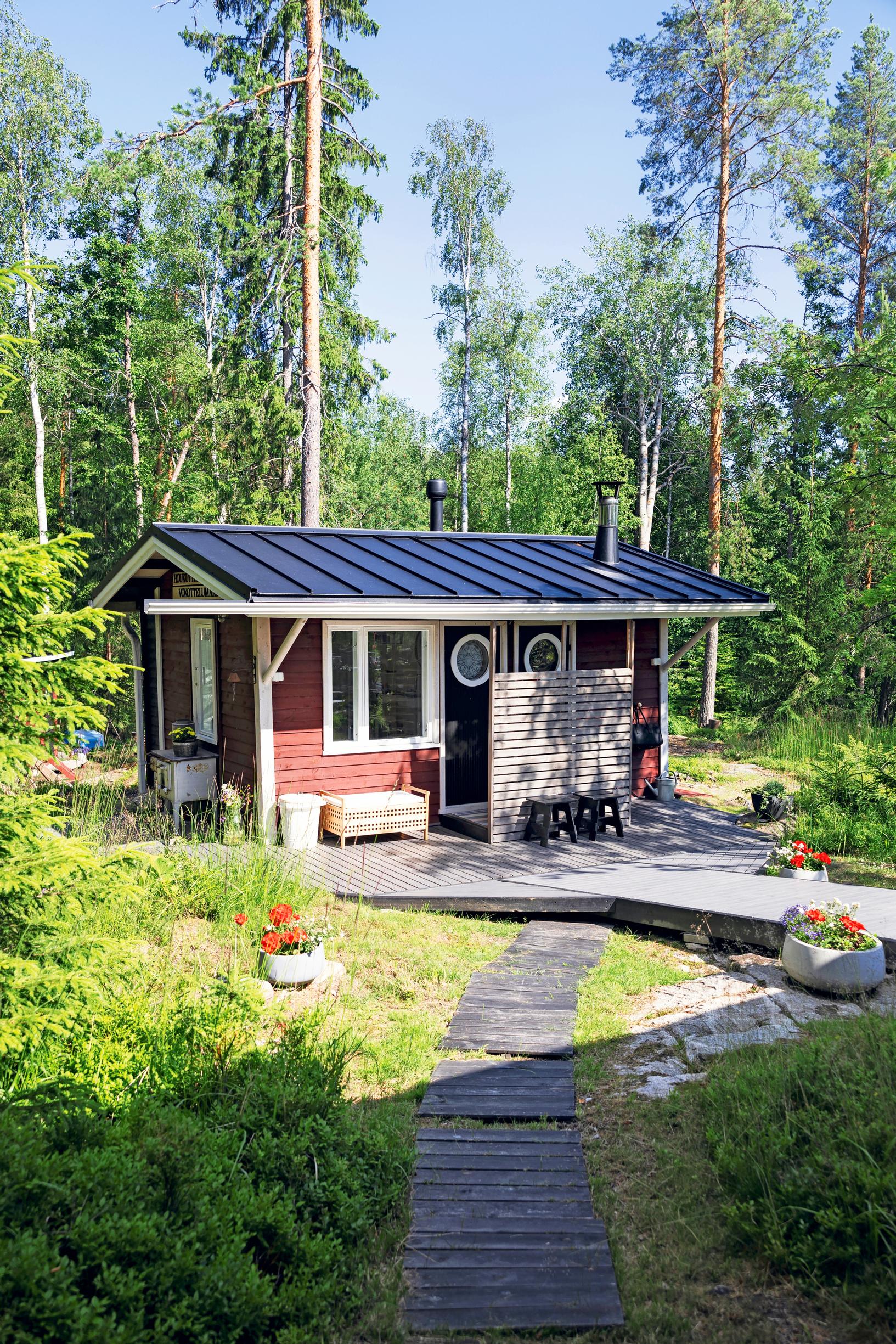
A dilapidated shed was turned into a sauna and guest house—here’s how the renovation was done!
Only the walls of the old shed were saved, while everything else was replaced. The once-shabby building now offers much-needed space for overnight guests and a dream-come-true sauna.
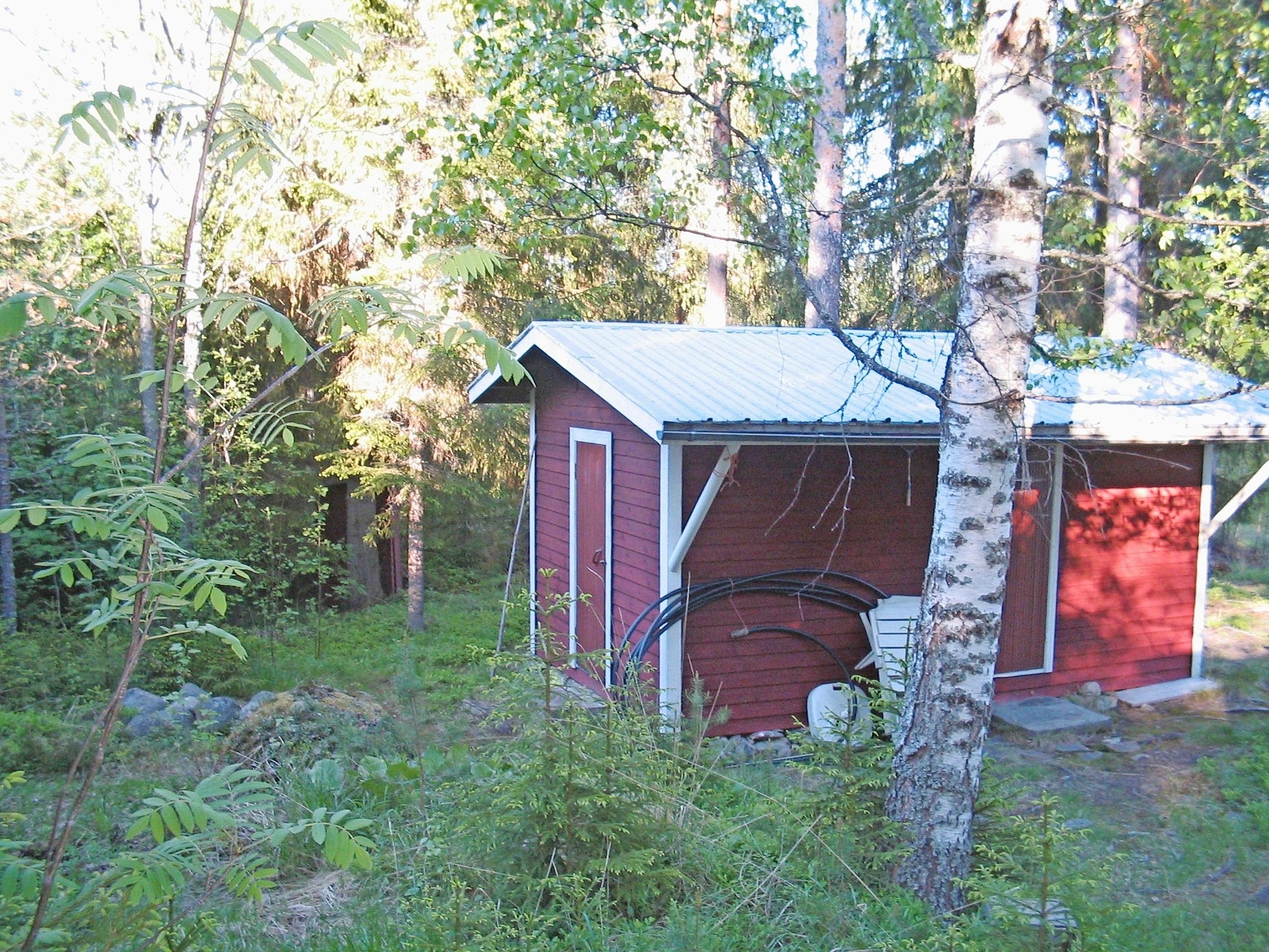
Starting point
The building was in such poor shape that many would have torn it down. Heidi and Arto still wanted to preserve as much of the combined shed and sleeping loft as possible. Their goal was to build a sauna and a lounge inside the old structure.
The building had particleboard walls and a dirt floor. It had settled crooked, and mice and bats had moved in. However, many elements, such as the frame posts and siding, were still in good shape.
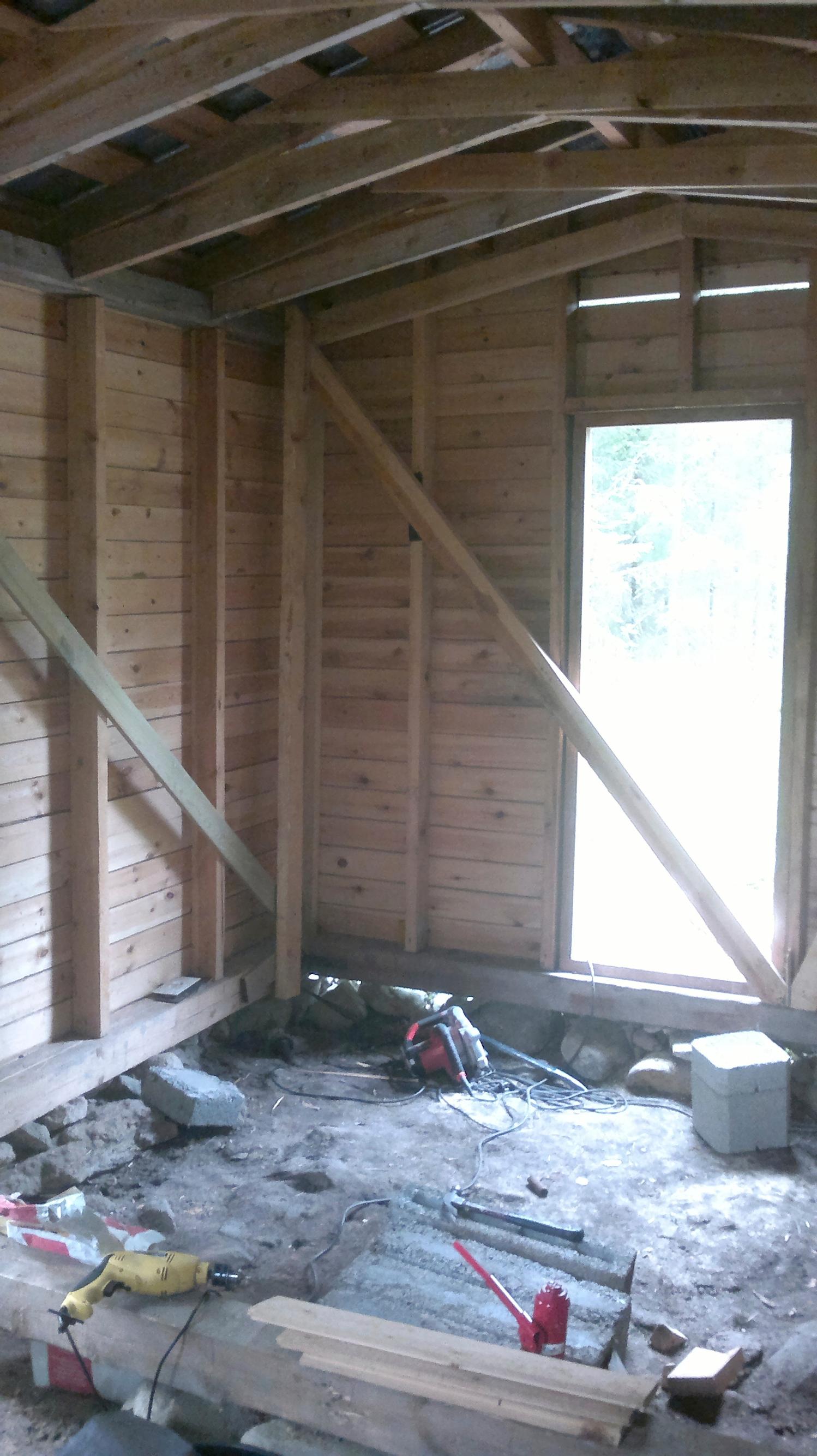
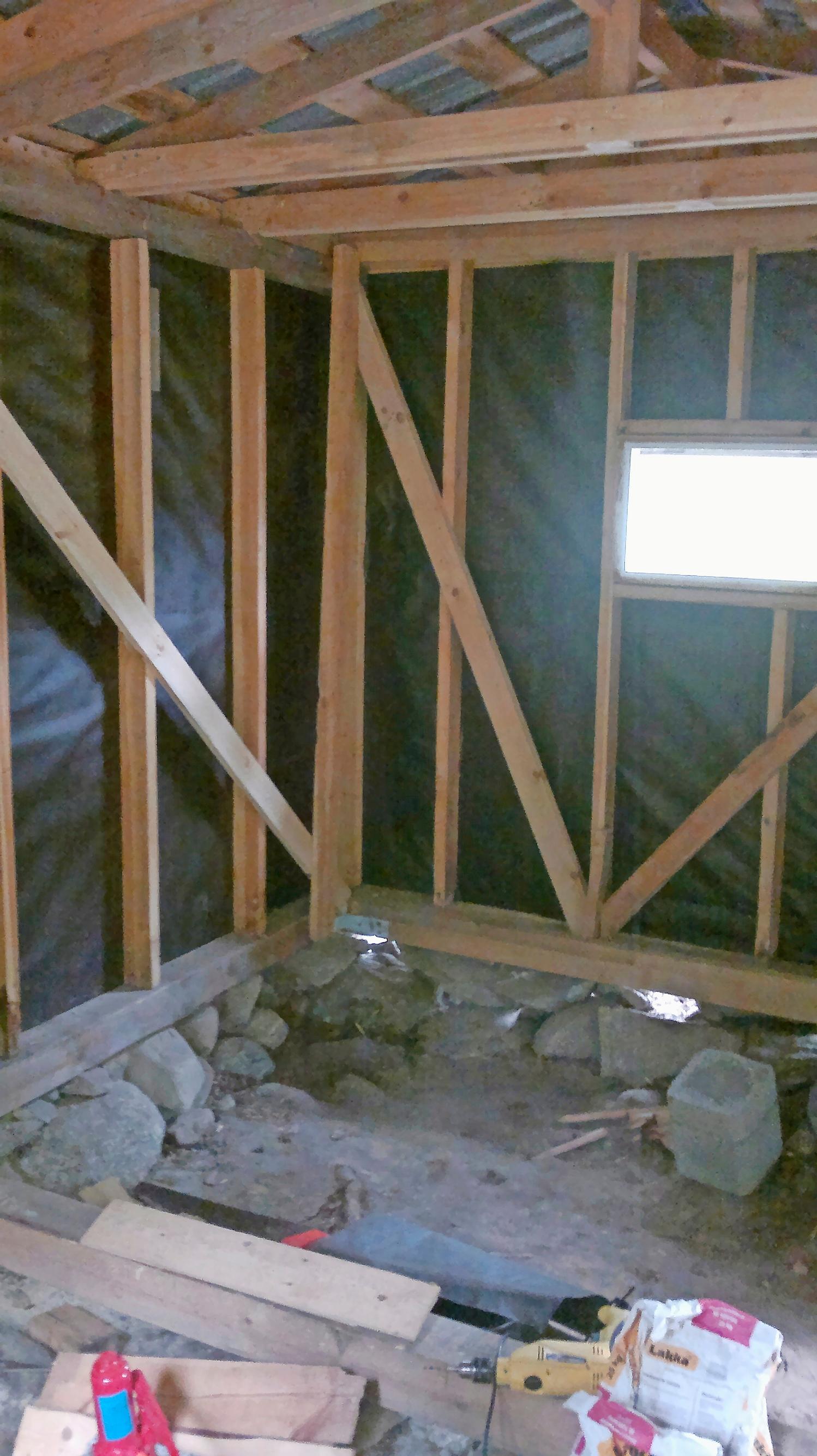
Renovation steps
The rocky site is inaccessible to heavy machinery, so to correct the tilt, Arto manually raised the building by ten centimeters. Now it rests on blocks anchored to the bedrock. The exterior still leans a bit, but Arto leveled all the interior surfaces and structures.
The doors and the partition wall were swapped. During the renovation, Arto also insulated the doors, and the old metal roof was replaced with roofing felt.
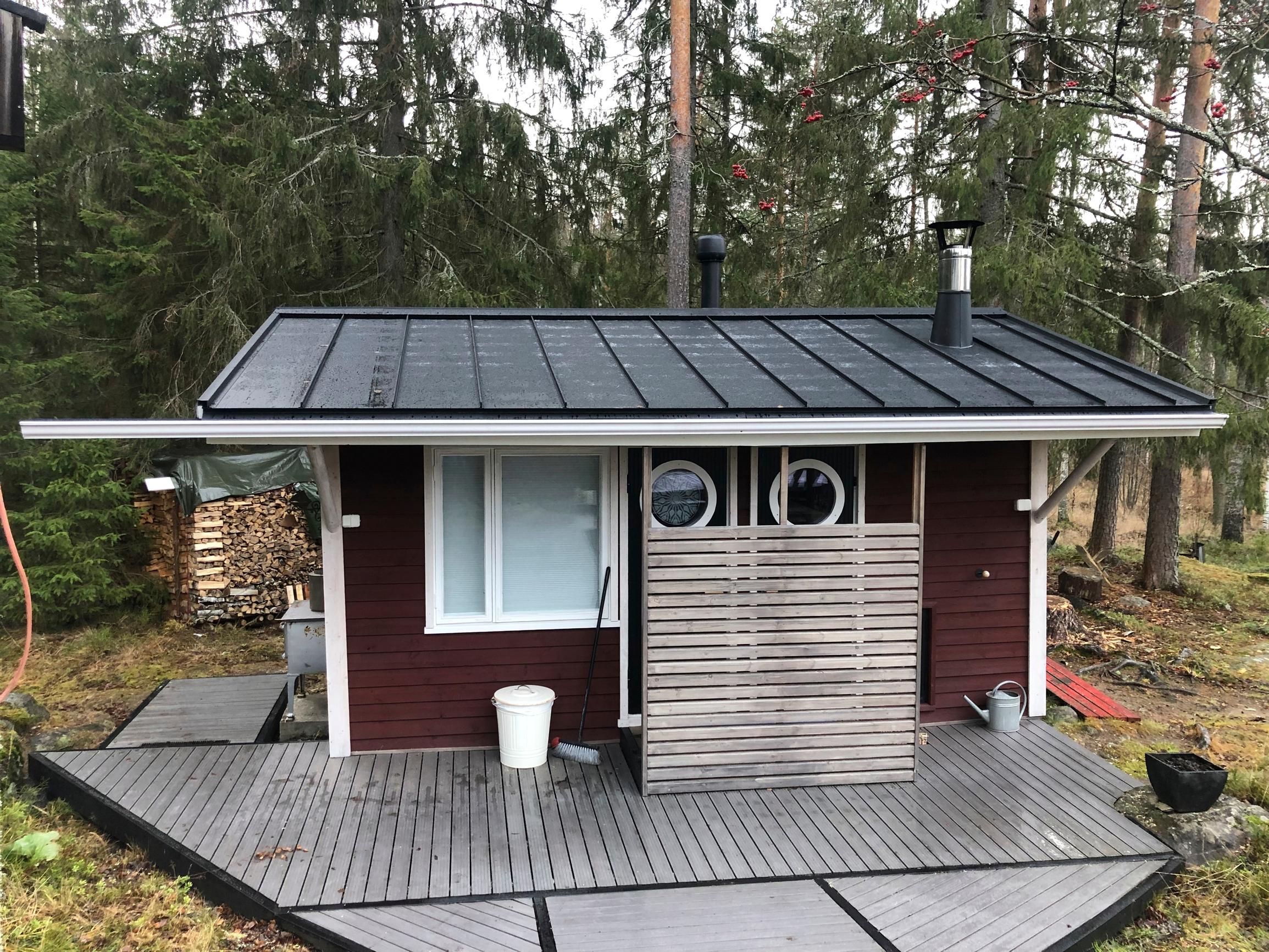
The couple wanted their new sauna to evoke the feel of an old log sauna, so Arto installed log-style paneling on the walls. A double application of sauna sealant gave them a weathered look. The benches were planed to order into wide boards.
The sauna floor is now made from heat-treated tongue-and-groove boards. Arto laid them crosswise, contrary to usual practice.
Brick tiles were installed behind the stove to create the ambiance of an old brick wall. For fire safety, Arto left gaps between the walls. Outdoor-rated wall lights were recessed into the lower part of the sauna walls and beneath the benches.
Under the pine floor of the sauna chamber, underfloor heating was installed. The walls are made of light-colored, factory-finished wood paneling.
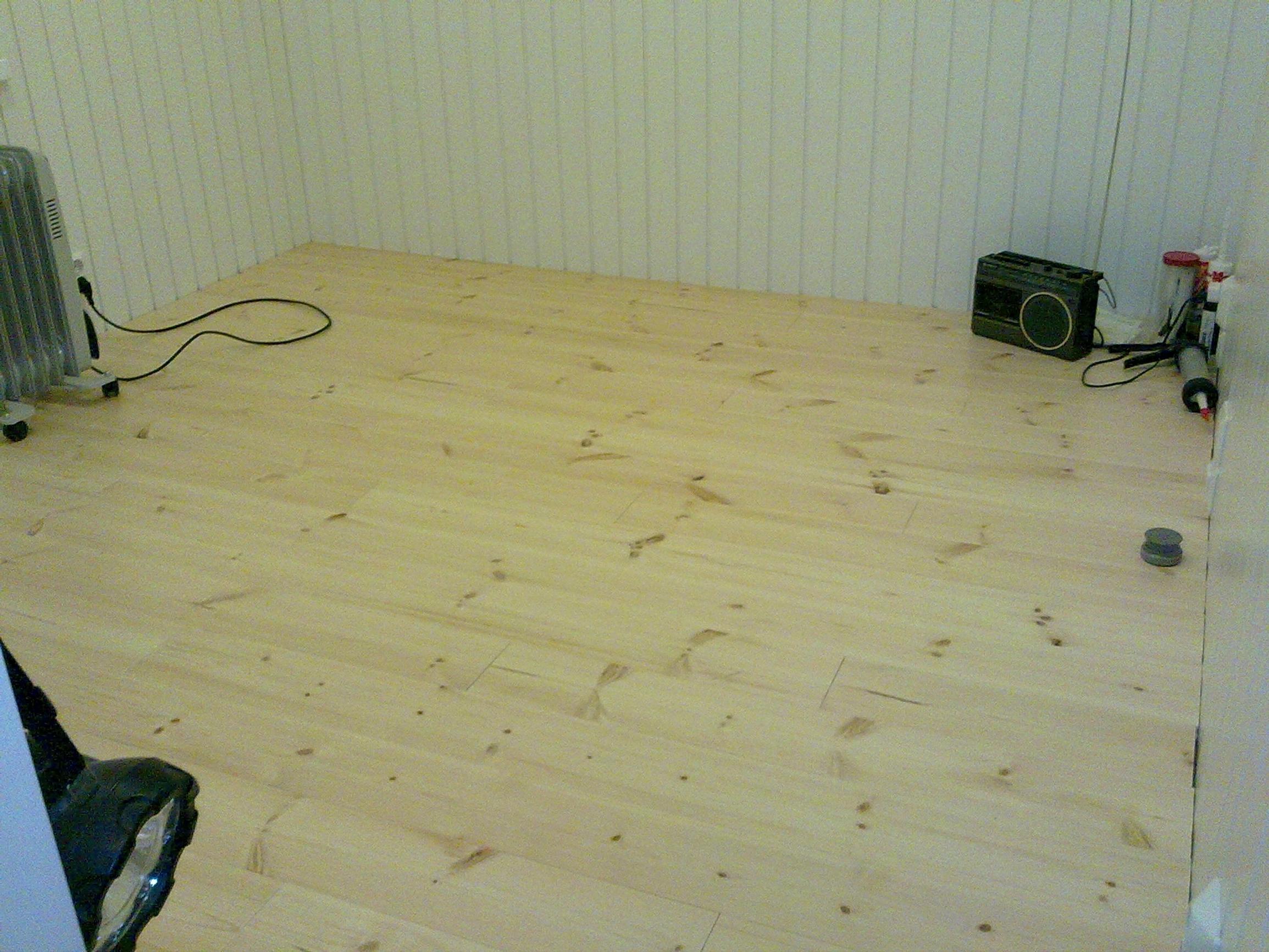
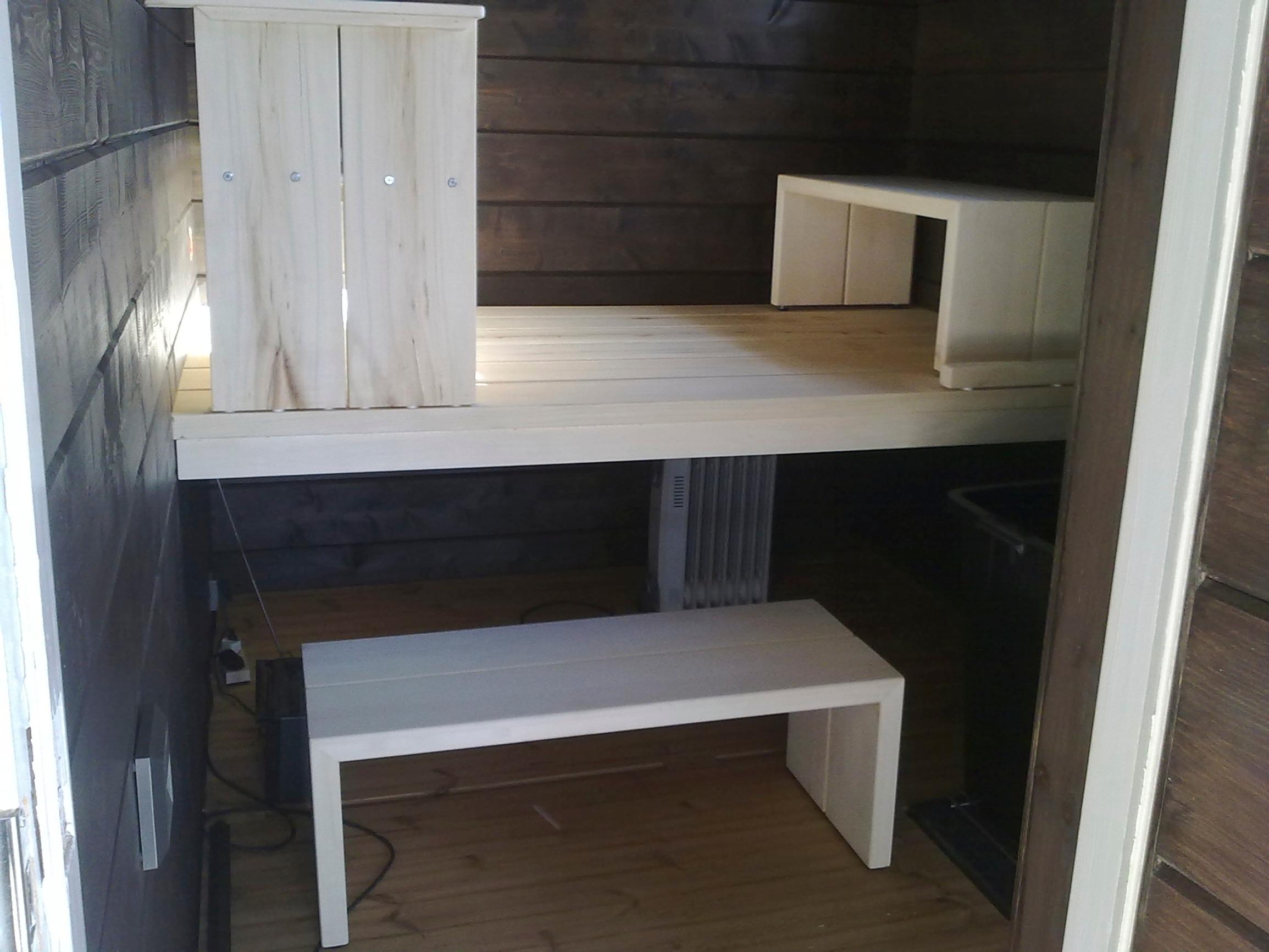
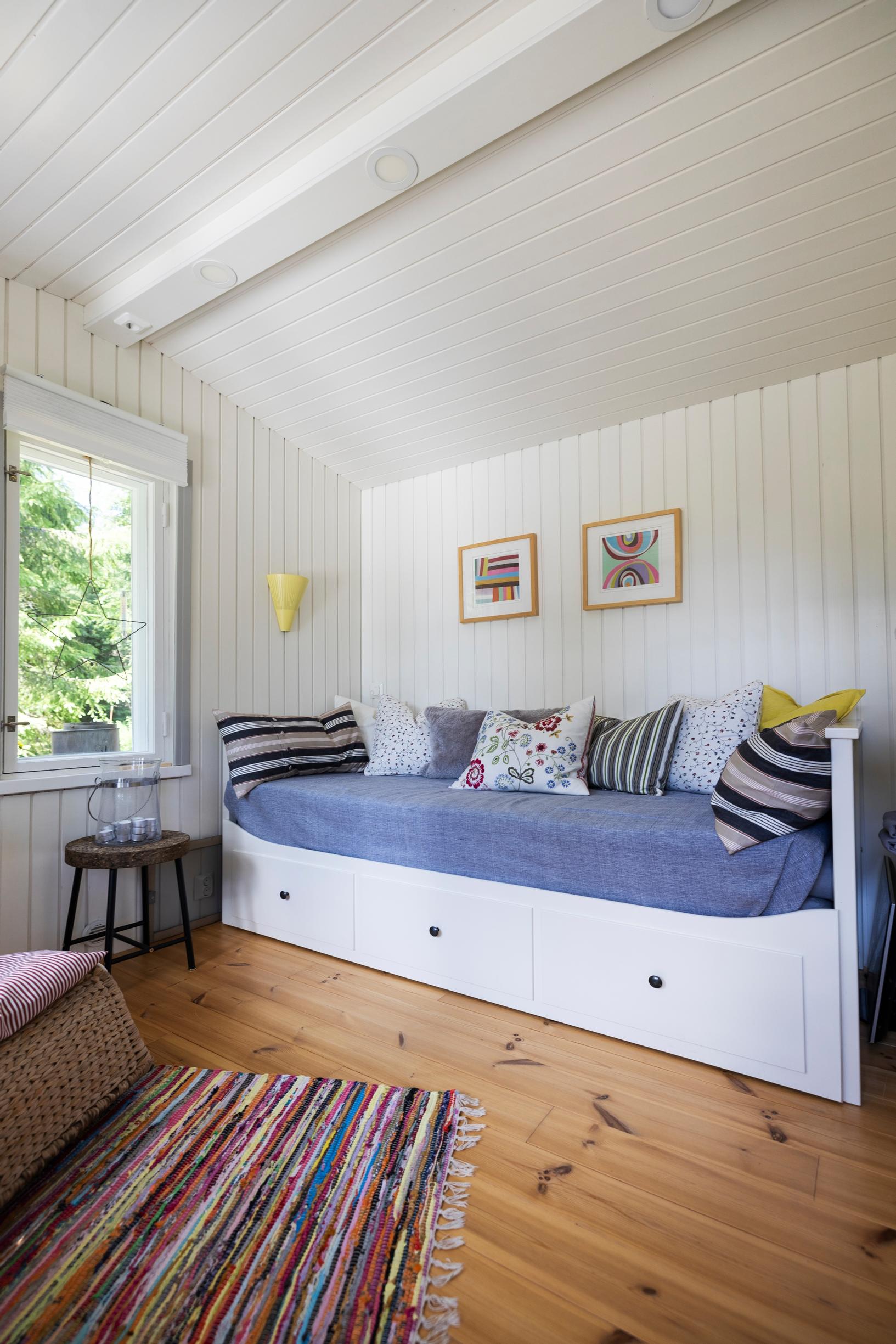
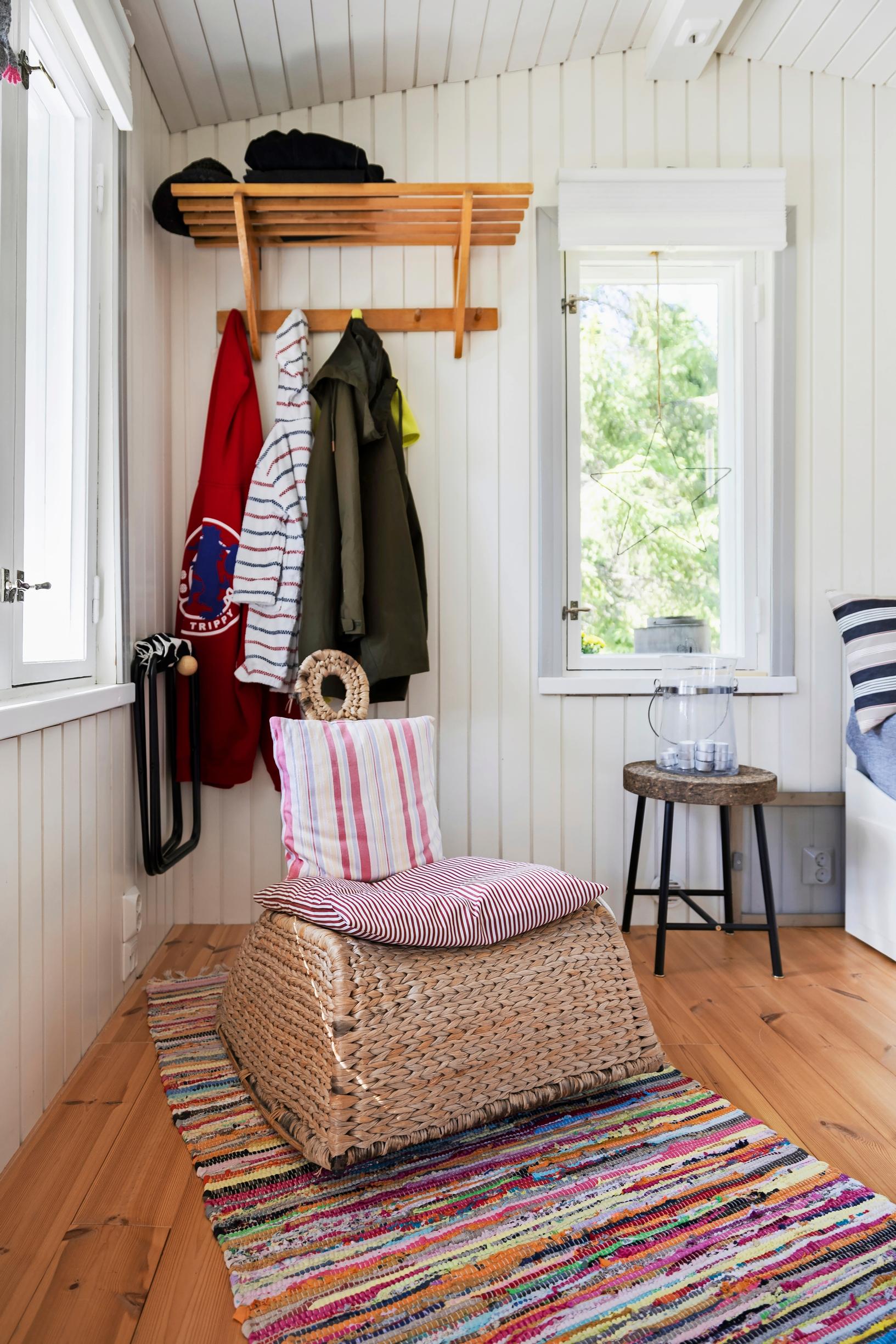
End result
The lounge worked well as extra space and served as a temporary living area while the couple later renovated their cabin. A particularly practical feature is the abundance of electrical outlets.
The renovation cost about 14,000 euros in total. The brick tiles and stove were the most expensive investments. The 120-centimeter-wide window is a major source of joy.
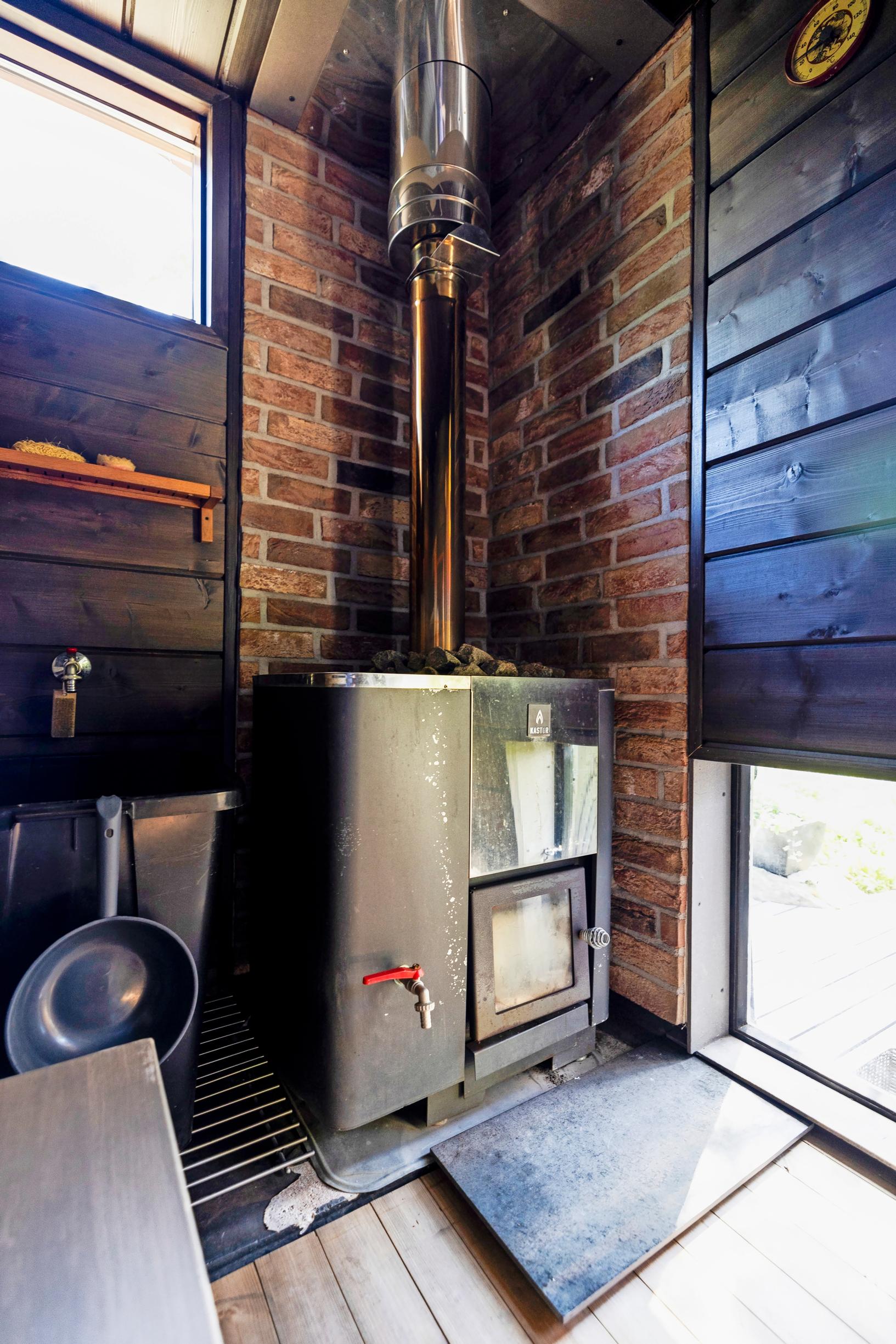
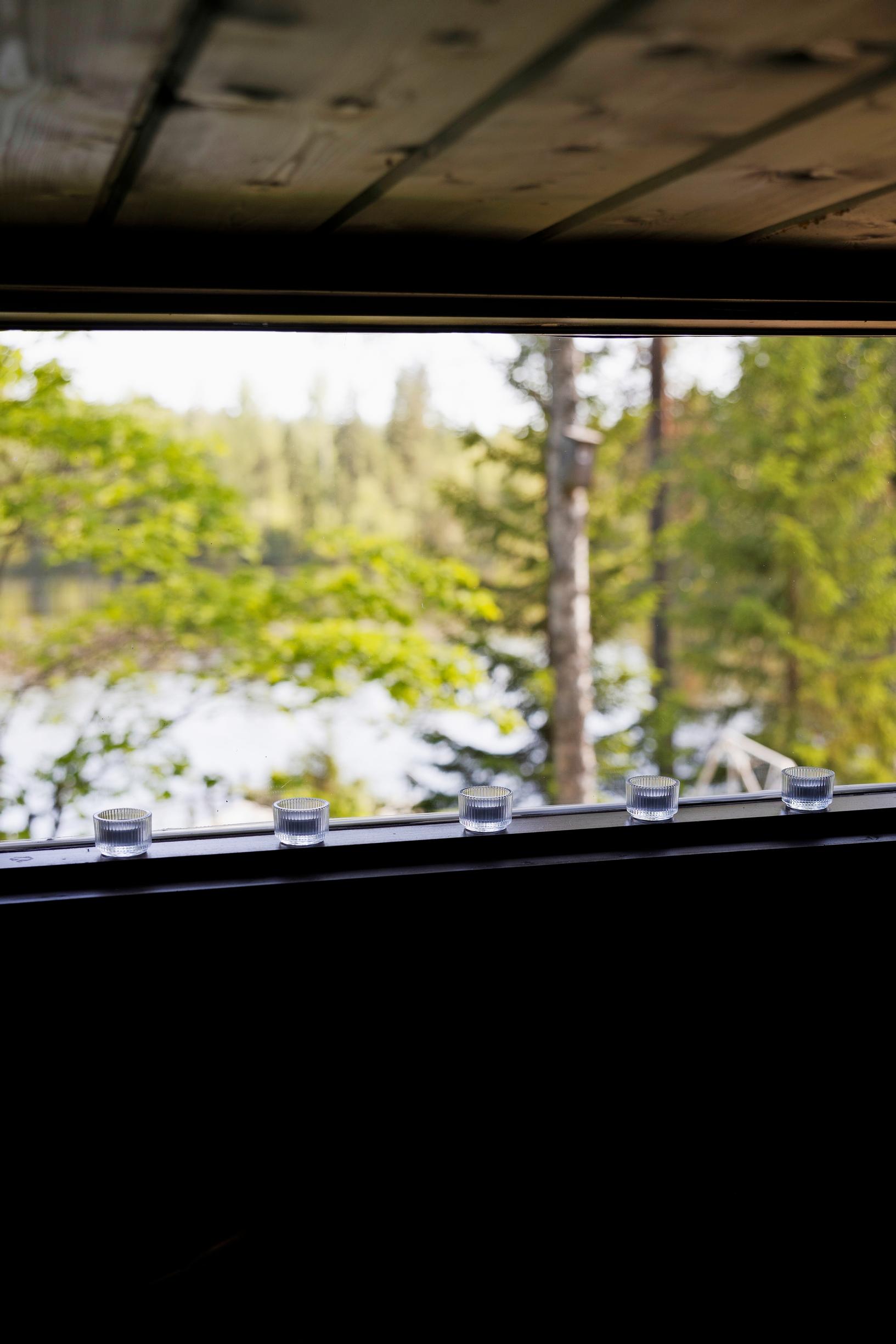
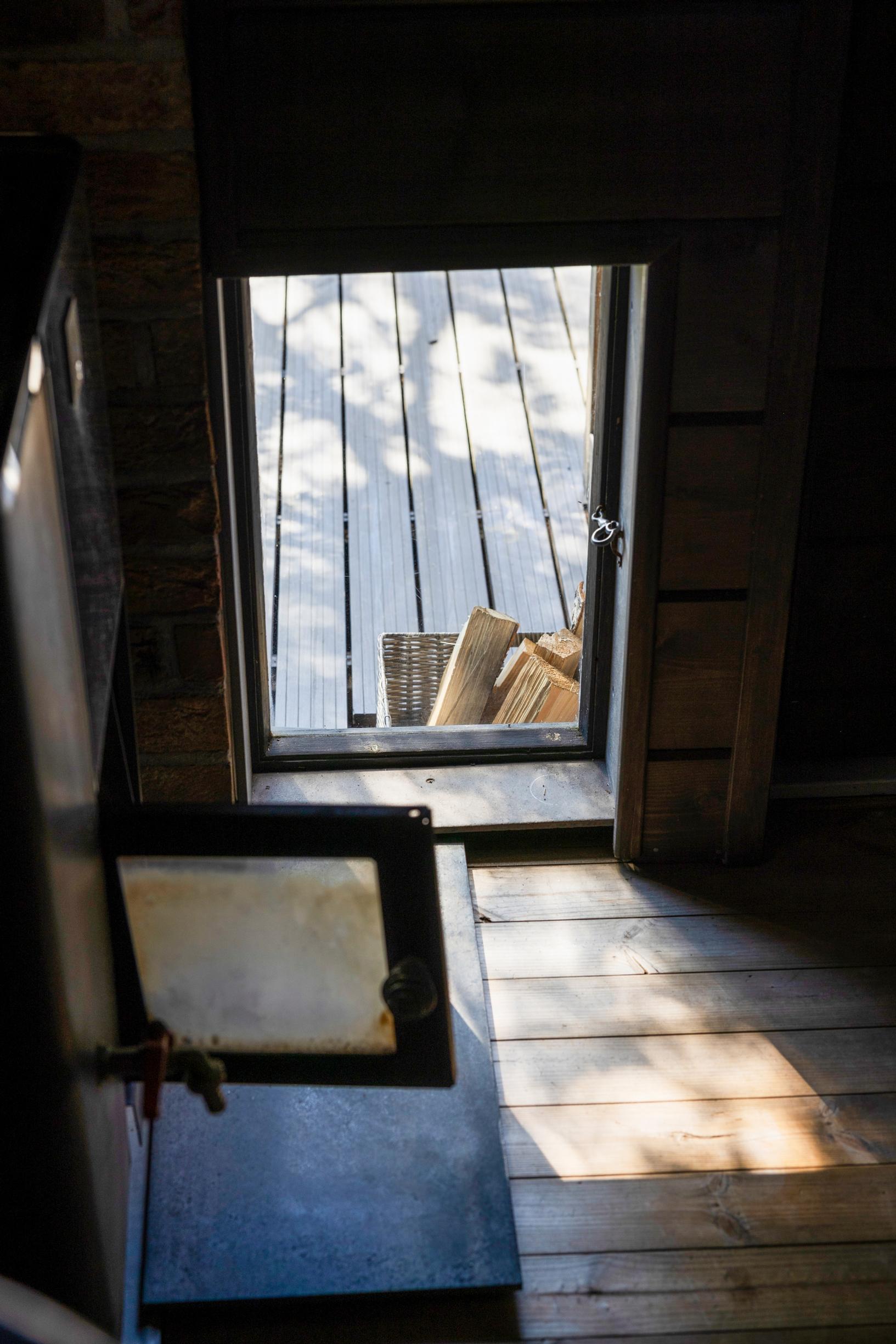
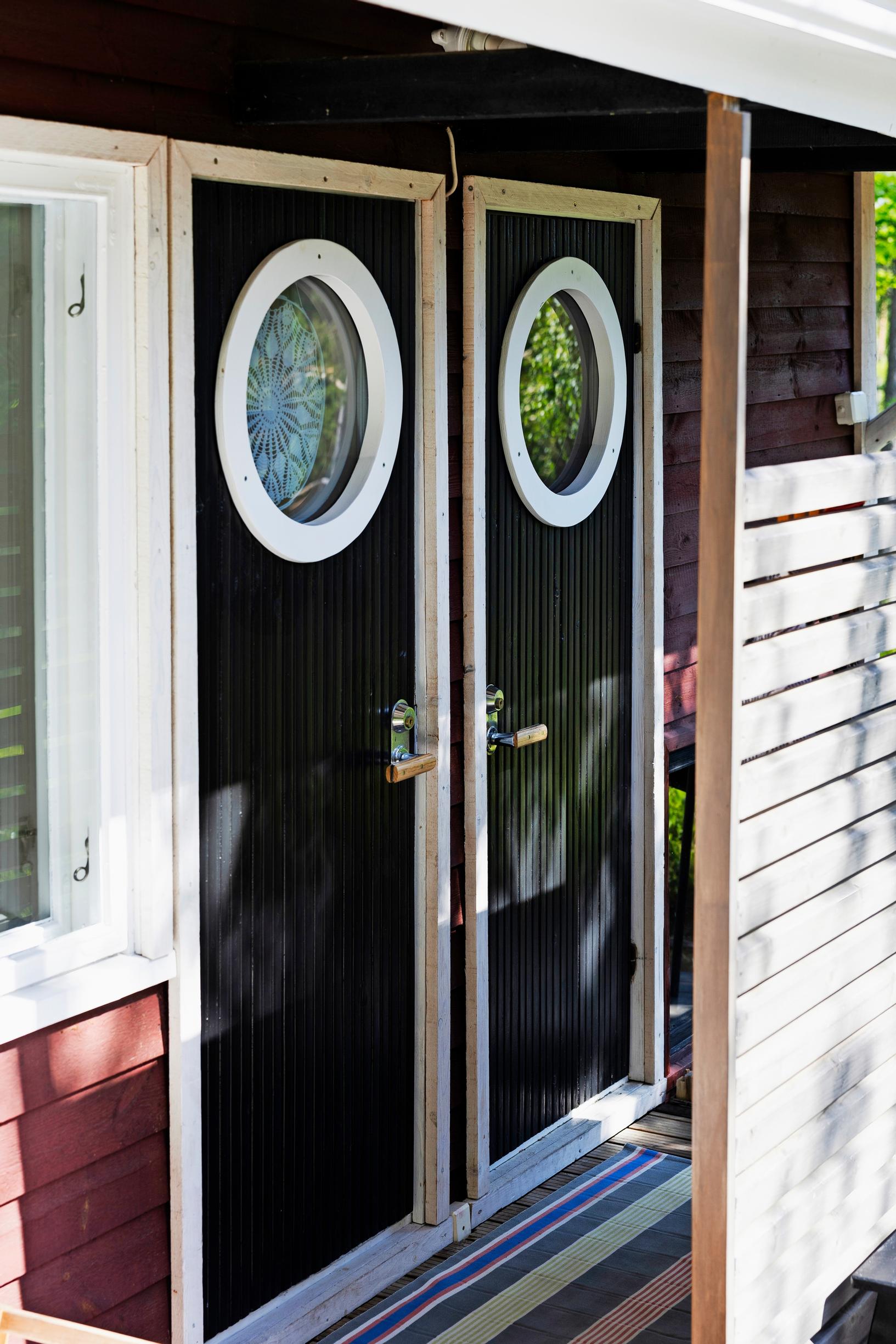
“It’s worthwhile to plan carefully for all possible ways to reuse materials.”
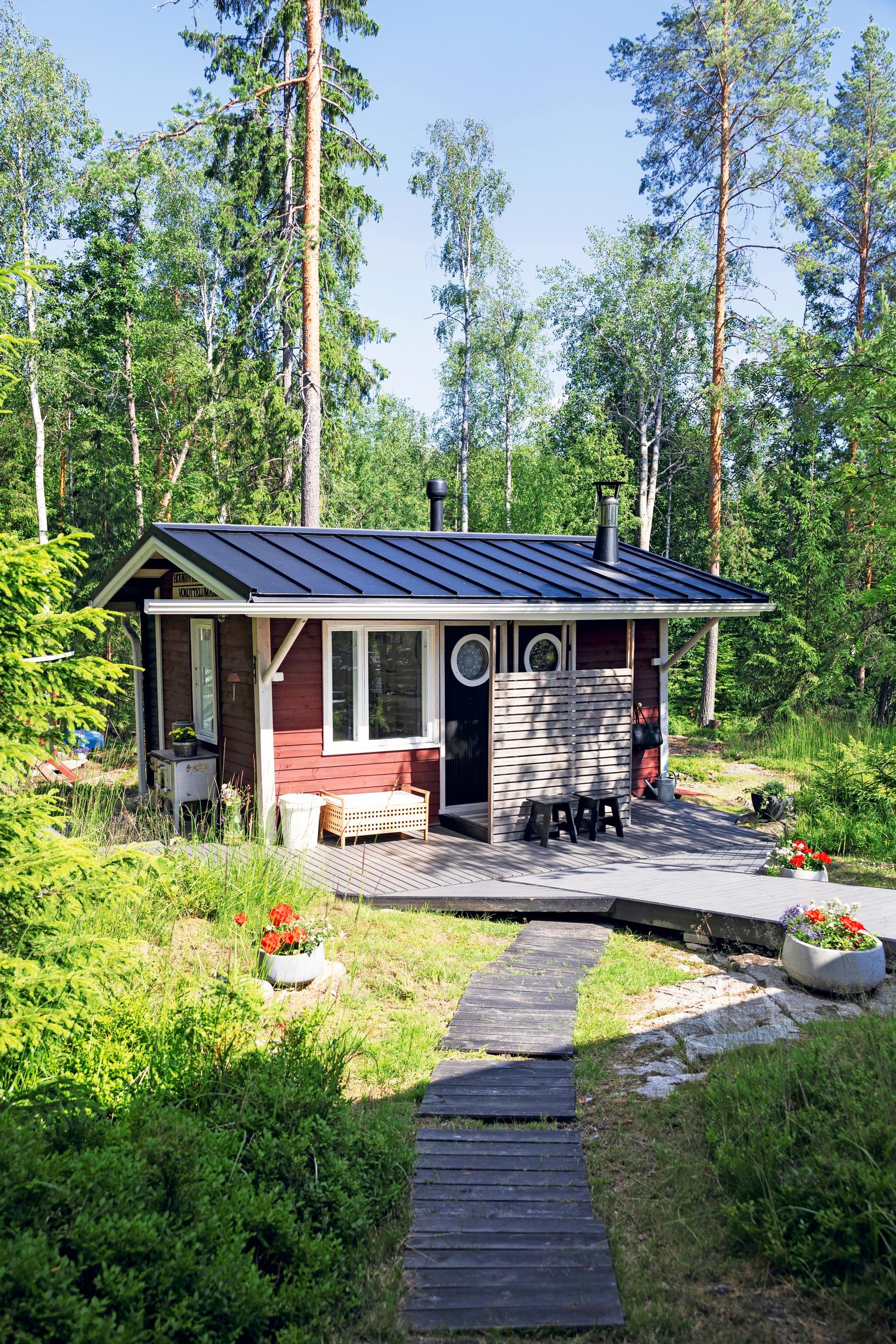
Renovation lessons
- “Light-colored aspen benches will darken over time. If we were doing it again, we’d pick a different kind of wood.”
- “The lounge’s plank floor squeaks because the boards are secured with finishing nails. The wood expands and contracts, so the floor will need tightening again in the spring.”
- “It’s not worth skimping on electrical outlets. With about the same effort and cost, you can get more for every need and avoid cords dangling from the walls.”
- “Doing most of the work ourselves and reusing old materials helped us keep costs down significantly.”


